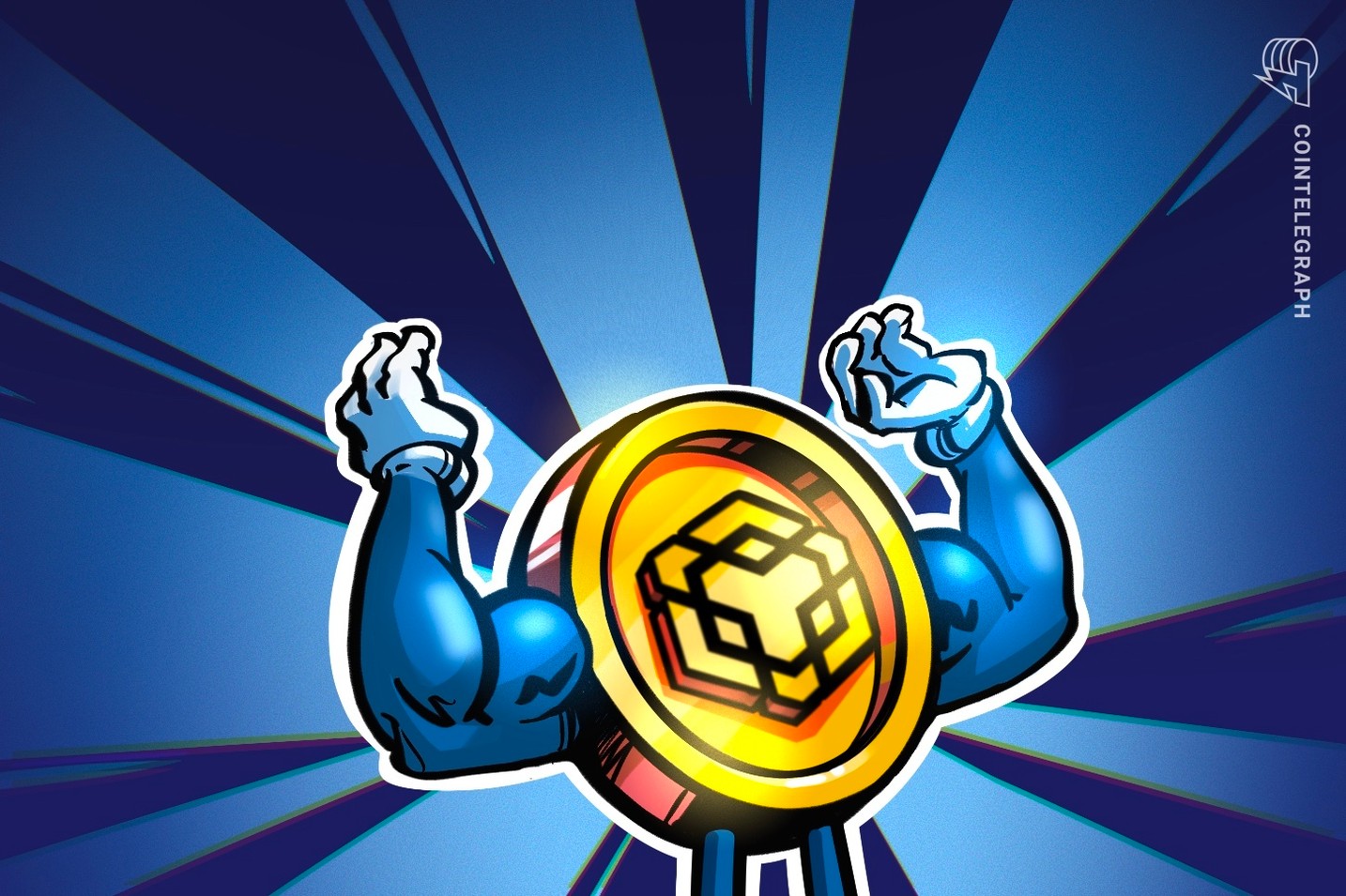October is historically one of Bitcoin’s (BTC) best-performing months, but this year, BNB (BNB) is stealing the show.
“Uptober” — coined to describe Bitcoin’s typically bullish Octobers — began on a high note this year, when the US government shutdown had just begun. Now, as Washington’s funding deadlock stretches past three weeks, that optimism has faded amid trade tensions and the aftermath of a historic liquidation event.
Meanwhile, BNB, the native token of Binance’s BNB Chain, has set new all-time highs twice this month. The network is experiencing a surge in memecoin trading and is competing directly with Hyperliquid in the decentralized perpetuals market through its Aster platform.
Although BNB has since retreated from its peak, it remains up about 6% since the start of October. But these gains are set against the backdrop of growing scrutiny over Binance’s alleged role in the recent market crash.
Binance’s BNB, memecoin season fuels metrics
Solana has long been the go-to network for memecoins. This is largely thanks to the token launchpad Pump.fun. But in October, its dominance was challenged by a new wave of BNB Chain-based tokens.
On Oct. 4, a cryptocurrency wallet reportedly turned $3,000 into $2 million after Binance co-founder Changpeng Zhao shared a post about a memecoin. This moment coincided with the start of a memecoin frenzy on the BNB Chain.
On Oct. 1, Pump.fun accounted for 93.3% of all memecoin launches between the two platforms. By the day of Zhao’s post, that share had fallen to 56.2%. One week later, on Oct. 8, BNB Chain’s Four.meme flipped the balance with 83.9% of new token launches while surpassing Pump.Fun’s daily revenue generation. BNB hit a new all-time high above $1,300.
During Four.meme’s early-October surge, blockchain analytics platform Bubblemaps reported that 100,000 traders had bought new BNB Chain memecoins, with 70% in profit.
The momentum has also lifted the network’s broader metrics. According to Nansen data, BNB Chain led all blockchains in total fees over the past week while coming in second in active addresses and transactions despite declines in onchain activity across the industry.
Soon after, the crypto market suffered its largest liquidation event on record, with $19 billion in positions wiped out and around $450 billion erased from total market capitalization.
Related: $19B crypto market crash: Was it leverage, China tariffs or both?
Following the crash, BNB Chain rewarded its memecoin traders with a $45-million airdrop round.
BNB Chain DEX Aster’s data drama and Binance’s tech glitch
While BNB has been enjoying a historic month as Bitcoin struggles to recover from the recent liquidation frenzy, Binance has been fending off growing accusations over its role in the crash.
One of the key allegations centers on a price oracle malfunction that briefly showed Ethena’s synthetic dollar, USDe, losing its greenback peg on Binance even though prices elsewhere remained stable.
Delphi Digital analyst Trevor King said Binance valued wrapped assets such as wBETH, BNSOL and USDe based on the exchange’s own spot prices instead of their redemption values. That made collateral appear weaker than it actually was. Because Binance’s oracle served as a de facto “price of record” across leveraged trading platforms, the mispricing rippled through to other platforms. King also added that a broader market downturn had already begun before the pricing error appeared on Binance.
In the aftermath, several X users claimed to have suffered losses due to Binance’s system issues that day. One of the viral posts came from the account 812.eth, who cited a “market-maker friend” to claim that orders were repeatedly rejected on Binance as prices fell, compounding losses. The post has since been deleted.
Binance denied being the source of the crash, attributing the sell-off to broader market conditions after US President Donald Trump threatened 100% tariffs on Chinese imports. The exchange admitted that “some platform modules briefly experienced technical glitches” and that “certain assets had de-pegging issues due to sharp market fluctuations.” Binance said it ultimately distributed $283 million in compensation. Despite the turmoil, BNB surged again, setting a new all-time high of $1,370 on Oct. 13.
On that day, Hyperliquid was the top platform for liquidations. The fast-rising perpetuals decentralized exchange (DEX) is now facing a rival in BNB Chain’s Aster.
Related: Aster delisting exposes DeFi’s growing integrity crisis
On Oct. 6, Aster led all perpetual DEXs with a whopping $41.78 billion in 24-hour trading volume. However, DefiLlama later removed Aster’s data, citing concerns about the integrity of its metrics. Although the platform was quietly relisted, DefiLlama’s founder, 0xngmi, said the figures still cannot be verified.
BNB turns Bitcoin’s “Uptober” into its own victory lap
October has been Bitcoin’s month, but this year, the spotlight shifted to Binance’s ecosystem.
A burst of memecoin trading, fresh incentives and the rise of Aster pushed BNB to record highs, defying a market weighed down by historic liquidations and international trade tensions.
While Bitcoin is stumbling through what has so far been its worst October in more than a decade, BNB Chain’s network activity and fee generation continue to climb.
The momentum hasn’t been spotless. Binance is once again under the microscope over its price oracle glitch, renewing scrutiny about how centralized its ecosystem really is.
Aster’s brief removal from DefiLlama only added to the skepticism around how the numbers stack up. But even with those cracks showing, BNB is turning a quiet month for crypto into one of its strongest performances of the year.
Magazine: Back to Ethereum: How Synthetix, Ronin and Celo saw the light
